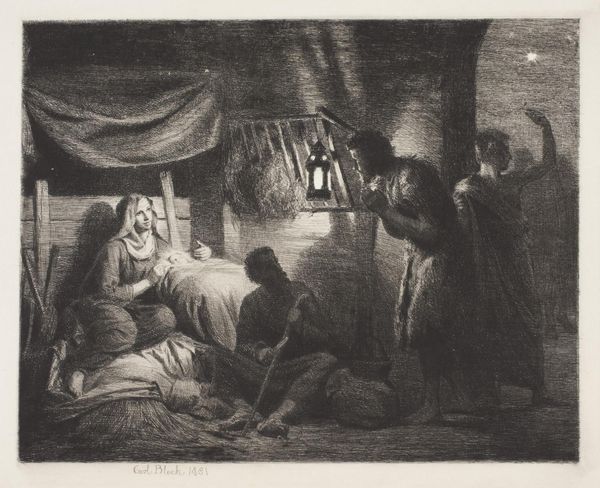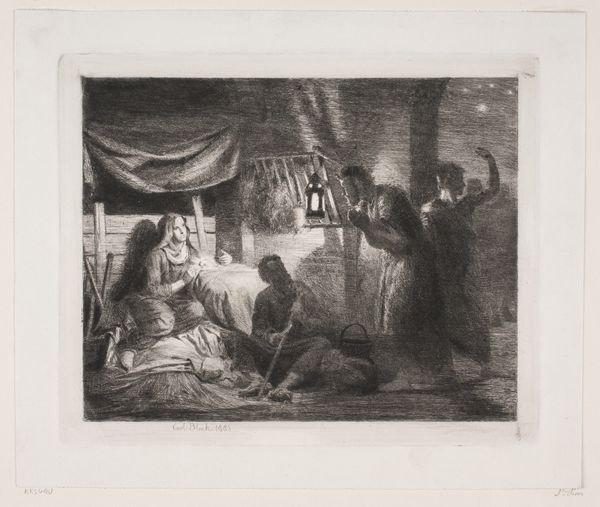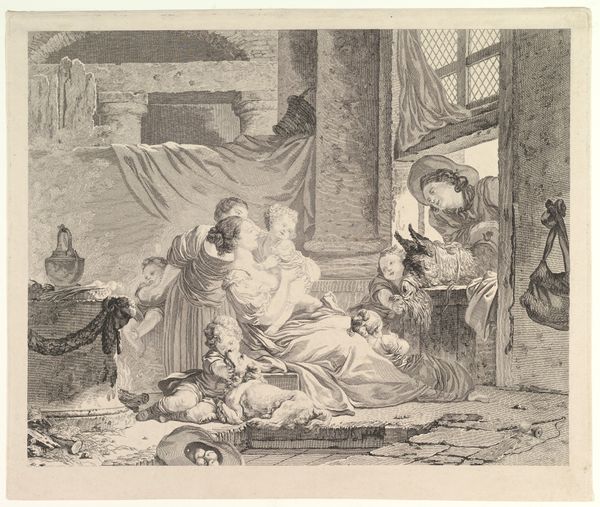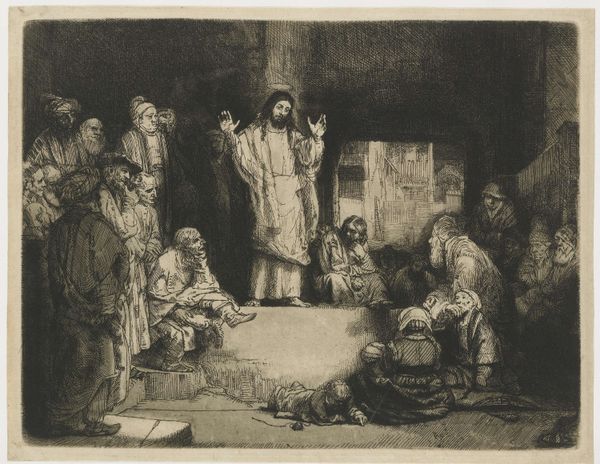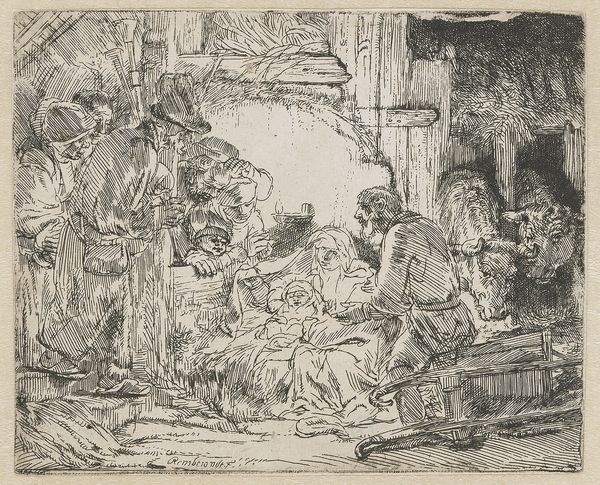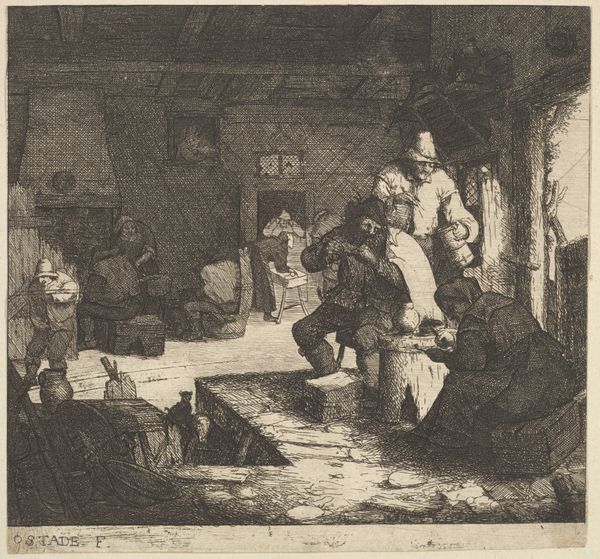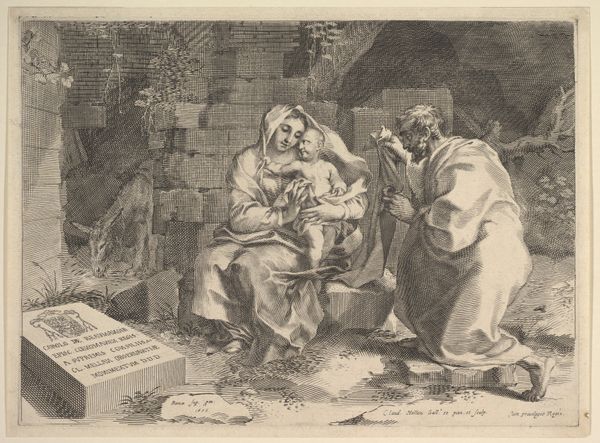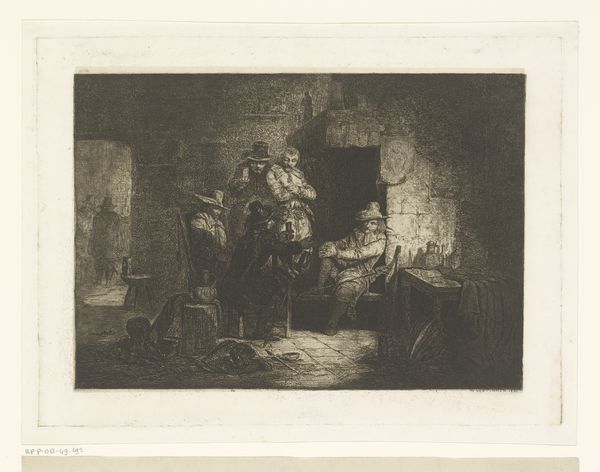
drawing, charcoal
#
drawing
#
narrative-art
#
landscape
#
charcoal drawing
#
figuration
#
charcoal art
#
oil painting
#
charcoal
#
history-painting
#
academic-art
#
charcoal
#
realism
Dimensions: 828 mm (height) x 655 mm (width) (bladmaal)
Editor: Here we have Carl Bloch’s “The Adoration of the Shepherds,” likely created between 1790 and 1890, using charcoal. The subdued tones create a reverent, almost hushed atmosphere. What do you see in this piece in terms of artistic approach? Curator: Focusing purely on its visual components, observe how Bloch utilizes charcoal to manipulate light and shadow, establishing a chiaro-scuro effect. Notice the strategic placement of the lantern – how its light dissects the pictorial space. The entire composition hinges on this light/dark contrast, which also carries significant symbolism. What does the drawing's materiality evoke for you? Editor: I suppose the charcoal gives it a raw, immediate feel. Almost like a snapshot in time, even though it's a historical scene. I wonder, beyond the technique, is there something specific about the composition that reinforces its themes? Curator: Absolutely. The figures are carefully arranged in a pyramidal structure, drawing the viewer's eye toward the apex: Mary and the Christ Child. This classic composition, derived from Renaissance masters, lends a sense of stability and divinity to the scene. And how do the varying textures created with the charcoal contribute to the overall meaning? Editor: They emphasize the rough, humble surroundings – the straw, the simple garments. It brings a sense of realism to this…divine event. The contrast in textures directs my eye toward what's important. Curator: Precisely. It’s a sophisticated rendering, using formal elements to guide our reading of the narrative. The artwork encourages the eye to study the different layers of charcoal in a theoretical sense to understand its intrinsic value, divorced from emotional interpretation. Editor: I hadn't considered the structural elements of light and texture quite so analytically before. Thank you. Curator: Indeed, by examining how these components interrelate, we can unravel the artistic strategies driving the artwork's meaning and impact.
Comments
No comments
Be the first to comment and join the conversation on the ultimate creative platform.
